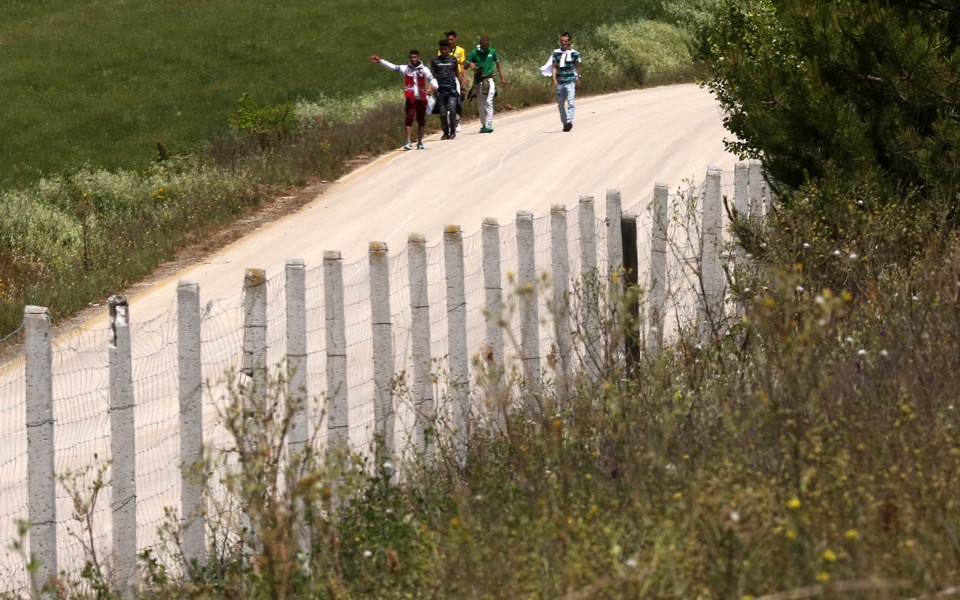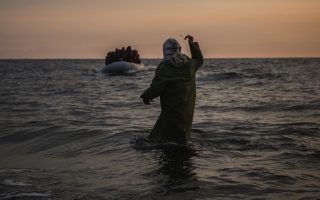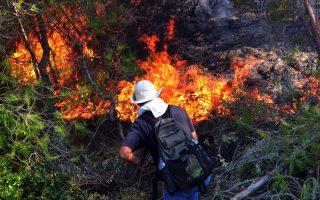Plans to ‘purge’ Istanbul of migrants fuel concerns in Evros

Concerns about a possible new influx of undocumented migrants into the country are increasing on both the eastern Aegean islands and in the region of Evros, northeastern Greece, with the approach of the October 30 deadline that the Turkish government has given Syrian refugees to leave Istanbul (or be forcefully removed).
The first police sweep in Istanbul a few weeks ago, which led to tens of thousands of refugees being transferred from Istanbul to the Turkish hinterland, coincided with a spike in arrivals of undocumented migrants on the Aegean islands, a development that Greek authorities did not regard as coincidental.
Now Turkish President Recep Tayyip Erdogan is threatening to “clear out” Istanbul, where an estimated 500,000 Syrian refugees have gathered along with thousands of migrants from Asia and Africa, the prospect of many – especially the migrants – choosing to flee via Evros or the Aegean islands rather than be moved to camps in southeast Turkey is fueling more concern for Greek authorities at the border.
“All these years, we in Evros have basically been faced with an unofficial war, with the pressure constantly increasing and us trying to respond to it with our limited and outdated resources,” a police source told Kathimerini.
The official said it was imperative that a government pledge for bolstering resources at the border – both patrols and equipment such as thermal cameras – be fulfilled without delay in order to effectively respond to a likely increase in migrant flows.
Citizens’ Protection Minister Michalis Chrysochoidis visited Evros last month and discussed the problems and demands of border guards during a meeting at the police precinct in the village of Neo Cheimonio in Orestiada.
“We need at least 500 border guards immediately so that local residents feel safe and so we become more efficient,” the same police source told Kathimerini, adding that human traffickers have found new routes to bring migrants into the country.
“They’ve started using routes through border villages in northern Evros to bypass our highway blockades, and they come across the plain of Komotini to get to Thessaloniki,” the source said.
“We have just two vans for the entire mountain region, one of which is usually out of order,” he said. He added that traffickers also use sea routes in the northern Aegean, bringing migrants on boats from Turkey to the region of Aimos, to Samothraki and Alexandroupoli.
Erdogan has warned of a new wave of refugees from the Syrian region of Idlib, where armed clashes are continuing, and has repeatedly threatened to “open the gates” to Europe, accusing the European Union of not honoring its financial obligations to Ankara, as he claims it has only received 3 billion dollars in aid for its response to the refugee crisis.
Beyond the geopolitical and financial goals for which the Turkish president is exploiting the refugee crisis, he is facing increasing domestic pressure, which is fueling his threats toward Europe, with Greece in the front line, as usual.
Anti-refugee sentiment is sweeping Turkish society, obliging his government to take measures to control the movement of migrants across the country, with sweeps in cities, beginning with Istanbul, and the transfer of migrants to camps in southern Turkey.
Commenting on the Istanbul sweep, Interior Minister Suleyman Soylu said that Syrian refugees who agree to leave will be allowed to settle and be registered in any part of Turkey except Antalya in the south, which is already overcrowded.
What is to happen though with the countless illegal immigrants in the shanty towns of Istanbul, who are waiting for an opportunity to reach Europe via Greece? A member of one nongovernment organization told Kathimerini that none of them will heed the call of the authorities as their aim is to get as close to the border as possible so they can cross into Europe.
“They will keep hiding in the sprawling city until the storm passes as they hope to cross the border into Evros or to reach some nearby island,” the NGO worker said.
There are already concerns about a new wave of refugees heading to Europe from Asia Minor in the countries on the so-called Balkan route, where thousands of refugees are already trapped in camps or hiding in forests.
There are an estimated 3,000 refugees in Serbia and more than 5,000 migrants from Bangladesh, Afghanistan, Iran and Pakistan living in wretched conditions in the forests of Bosnia-Herzegovina, waiting to sneak across the border to Croatia and then continue to Germany.
They got there with the help of rackets through Greece, Albania and Montenegro and survive thanks to the help of volunteers and financial aid from European Union programs which, however, often come up against the ethnic rivalries between Serbs, Croats and Muslims in Bosnia which have been simmering in the region since the Yugoslav wars.





